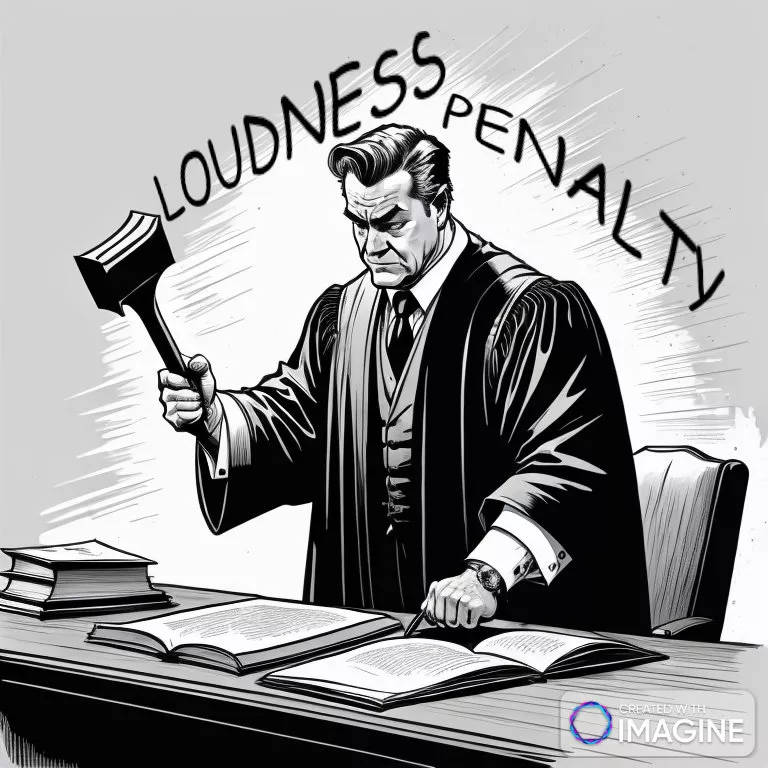Friedemann’s thoughts on Ian Shepherd’s Loudness Penalty initiative
Our dear students often ask me about Ian Shepherd’s website www.loudnesspenalty.com and how to deal with it. First of all I am grateful for Ian’s work in continuing my PMF heritage. The PMF was the Pleasurize Music Foundation I founded back in 2008 in California which had rolled out the DR (Dynamic Range) initiative with the initial DR Meter with the aim to mitigate the loudness war. Ian was – back in the days – one of the first strong supporters of the PMF and has started the Dynamic Range Day to continue the idea to spread more awareness for sound quality and meaningful decisions in the loudness decision making phase of the music production. In 2009 we were able to spread the word about this topic in more than 50 magazine articles to more than 50 million readers. PMF had support of some inspiring music industry fellows from Steinberg founder Charly Steinberg through producer & engineer Ronald Prent to mp3 inventor and Fraunhofer director (Ilmenau) Prof. Karlheinz Brandenburg and industry veteran Oliver Masciarotte.
Ian’s loudness penalty website is quite a useful tool to educate yourself in the process of learning to make the right decision in terms of loudness. This could be one puzzle piece to get your skill set together to make the right meaningful informed decisions.
This is how it works: You drag your mix or master file onto the website and after a moment it gives you an instant overview of how many dBs your master would be turned down (based on loudness normalization) on quite a choice of streaming platforms.
This is very useful to learn to understand the mechanics of loudness normalization of streaming platforms and the consequences of overdoing the loudness aims in cases you actually don’t need to.
And here comes the controversy: While I am still a believer and supporter of preserving dynamic range in masters, I dislike the term “Penalty” in this context. I am rather a believer in informed decisions paired with the ability to make out the fine line between enough and too much loudness.
What I want to say here is that some songs need a certain density (loudness) to contain the wanted and needed glue and impact. Let’s say you produce a Hip Hop song and you would master it at -14LUFS (with the full range up to -0,3dB TP used). Most likely it would not appear as compact as listeners are used to hearing music of this genre in a more compact fashion. On the contrary you risk losing opportunities for musical expression if you master it at -8LUFS.
The decision making process requires quite a wide range of skills as sketched in my last blog entry #008 from September 8th, 2023.
Here a brief guideline for your decision making process:
- Make sure that the master you are working on is NOT going to be promoted to DJs which would download the song and thus take it out of the loudness normalized eco system of those streaming platforms. If this is the case (most likely true for some kinds of electronic music) you may decide to play the loudness war hard to satisfy the demands of your customer.
- When your master is NOT promoted to DJs you can make way more relaxed decisions. Make the decisions solely based on what your music needs in terms of compactness.
- Create the needed compactness without compromising the transient vitality of your master because over-limited peak structures lead to listening fatigue and may encourage listeners to turn down the listening volume or skip the song from the playlist without knowing why. The ear needs a slight variability (richness of variety) in the transient structure to be stimulated. If, for example, all kicks and snares have exactly the same, smoothly ironed tip structure, this has a tiring effect.
- Avoid distortion unless it is supposed to be an inherent part of the sound supporting the artistic aim of the song (like e.g. saturation).
- Don’t kill macro dynamics for the aim of more loudness. Creating compactness and killing macro dynamics are two different things. You can have compactness and yet preserve macro dynamics. Macro dynamics is the loudness variation throughout your song structure. Softer intros or verses and stronger choruses support the artistic expression of the song so that you should learn to combine both together.
- Learn to find what I call the “point of trade off”. This means you go as far with loudness as it is beneficial for the song. As soon as you start to pay (by overly limited transients, distortion, or loss of macro dynamics) you would back off. At the same you want to make sure that the macro dynamics is not too high. A song won’t work on the radio if your verse is 10dB lower than the chorus.
Conclusion:
In my humble opinion it doesn’t make sense to avoid “penalty” for the sole unreflected aim of highest possible dynamic range. In other words: When you have developed the skill set to make the right decisions and e.g. -10LUFS is perfectly right for a particular song, then a 6dB gain reduction is no penalty. It is just what it is. On the contrary if your Jazz master lags macro dynamics and/or a vital peak structure you definitely pay X dB of loudness penalty.
To learn more about this topic Ian’s website https://productionadvice.co.uk/loudness-penalty/
is a good place to gather more information, despite us having slightly different opinions about penalty.
Happy mastering!
Friedemann Tischmeyer, September 2023



